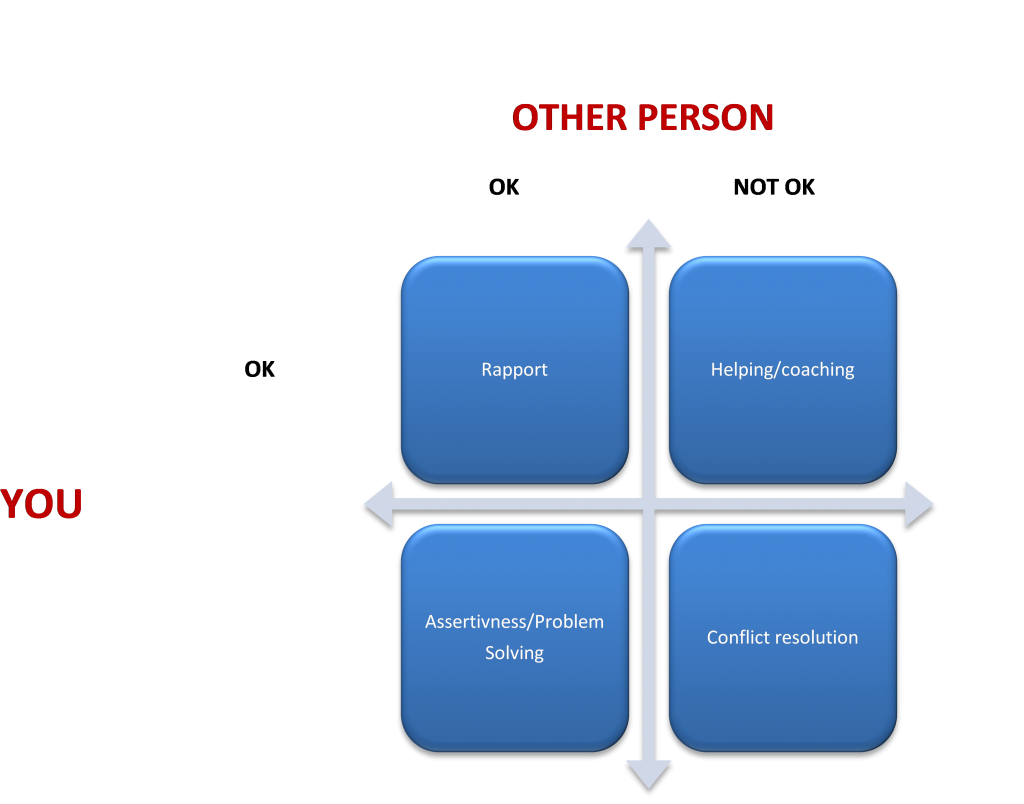Have you ever had a conversation turn into an argument and been left wondering “where did that  come from? I was only trying to help!” Read on to discover what the Problem Ownership Model is and the dangers of engaging in a conversation with someone who effectively has a “No Vacancy” sign on their forehead.
come from? I was only trying to help!” Read on to discover what the Problem Ownership Model is and the dangers of engaging in a conversation with someone who effectively has a “No Vacancy” sign on their forehead.
In his book “It Was on Fire When I Lay Down on It” Robert Fulghum investigates the “No Vacancy” phenomena and how you can unwittingly become an “intrusive helper“. Robert knew that his insurance claim would fail if it was discovered he had been smoking in bed.
After the inevitable happened he found himself sitting on his hands and squirming in his seat. He looked the Fire Chief straight in the eye and said “Well, that’s not what really happened….the bed was burning when I lay down on it.” Then he realised how futile his statement was and gave up.
This is the reality of an “intrusive helper“, it is the equivalent of lying down in a burning bed. If you try and communicate with someone who has a “No Vacancy” sign up, chances are you know you are going to face Armageddon… yet you do it anyway (NB parents of teenage children tend to know this outcome well).
Which leads me to the Problem Ownership Model, developed by Thomas Gordon, and expanded on by Richard Bolstad and Margot Hamblett. The beauty of this model is that it is not about laying blame or judging behaviour, it’s about focusing on who is upset and preventing the burning bed scenario.
If you imagine a box with a line drawn horizontally across it, everything that is said or done above the line is ok, it doesn’t upset you, and you don’t have a problem with it. Everything that is below is not ok – there is a problem. When you interact with others they have their own line too defining what is ok and not ok. (See diagram below).
The idea is relatively simple, if you can work out where you are on the Problem Ownership Grid you can choose how you are going to react. The “Readers Digest” version of how the grid works is:
Rapport – I’m Ok/ Other Ok – Neither of us owns a problem and therefore no problem exists. Any communication focuses on gaining even better rapport. As no energy is directed on problem-solving your focus can be on achieving mutual goals or just enjoying each other’s company.
Helping/Coaching – I’m Ok, Other Not Ok – If someone is upset, then they “own the problem”. This does not mean that they are “at fault” or “should” change something. It simply means that they are not ok. The most effective skills for “Helping” is to actively listen and reflect on what the person is saying while avoiding judging or rescuing i.e. providing solutions.
Problem Solving/Assertiveness – I’m Not OK / Other Ok. You own the problem! If the other person feels okay, and you don’t, it’s time for you to solve the problem. Technically known as a response based in assertiveness, this is where you set your own boundaries, and state your needs. For example, I own a problem where I’m resentful that I did extra work when my colleague didn’t attend a meeting. I need to raise the issue and get agreement on how things will work in the future.
Conflict Resolution – I’m Not OK/ Other Not OK. No one is happy and the conflict is clear. In a nutshell it’s time to either step away and take a breath or use “I” statements to identify:
the specific behaviour that is the subject of the concern,
“When (concrete description of what happened)
The feelings generated in response to this behaviour,
“I feel …sad/confused/awkward etc”
Any sensory specific effects on me of that behaviour
“The effect on me is …. (time, productivity, money).”
Of course there is a lot more to the Problem Ownership Model than a few paragraphs in an Employ Me Now! post. If you want to learn more Karyn Chalk of Changing Ways delivers the full NLP Transforming Communication training package so email her at karyn

